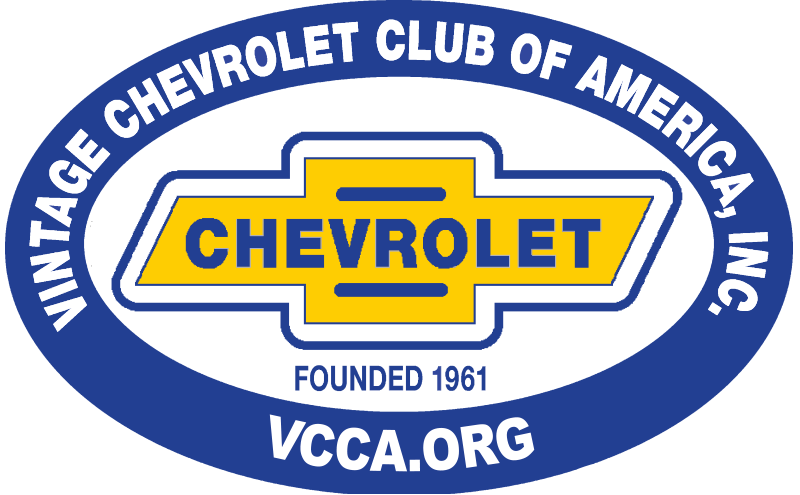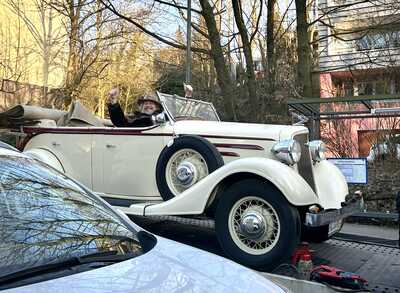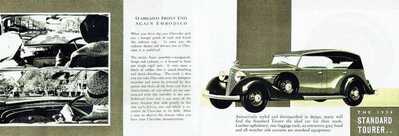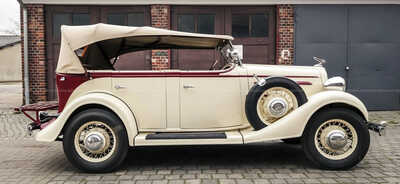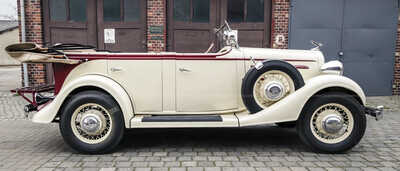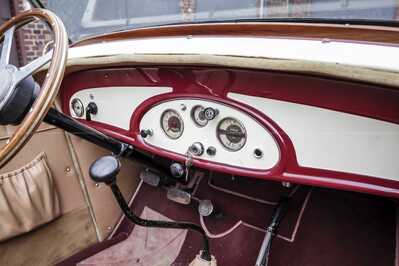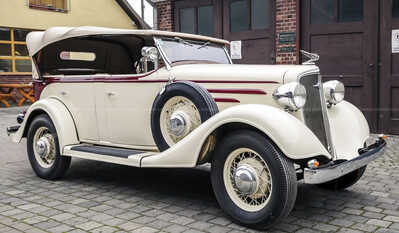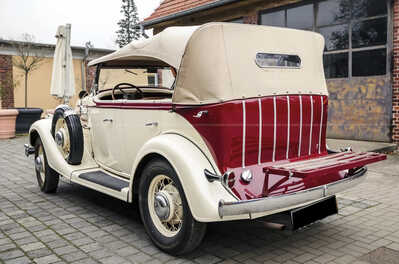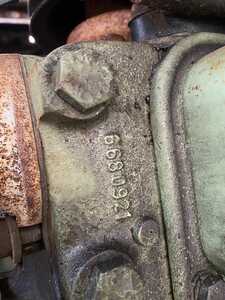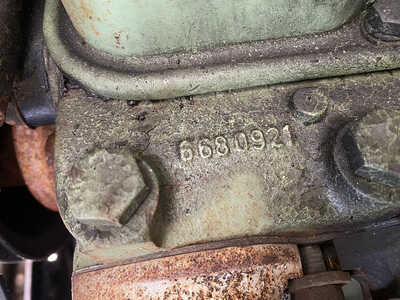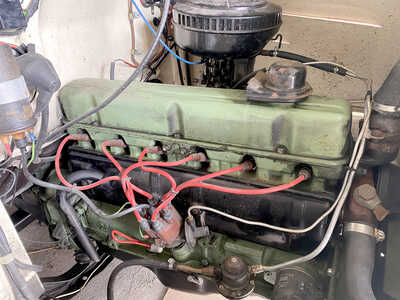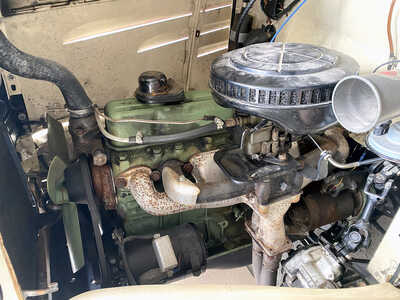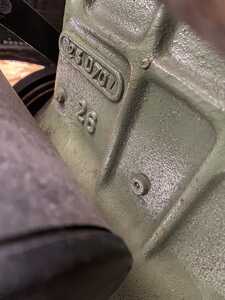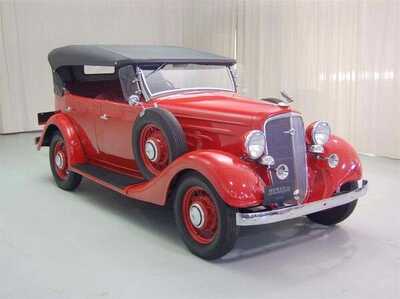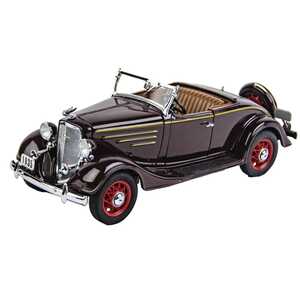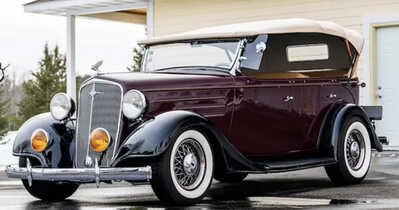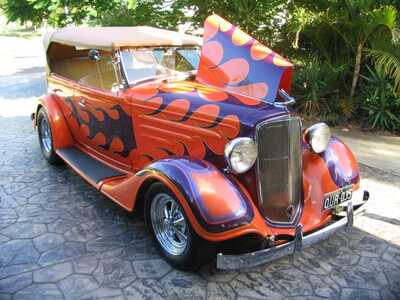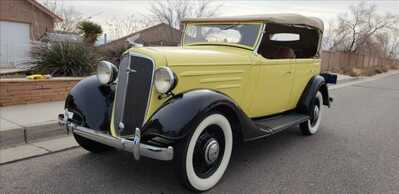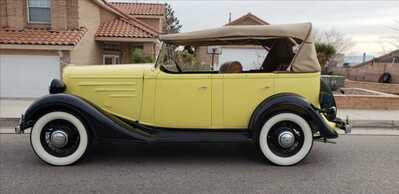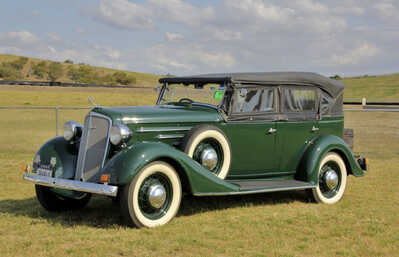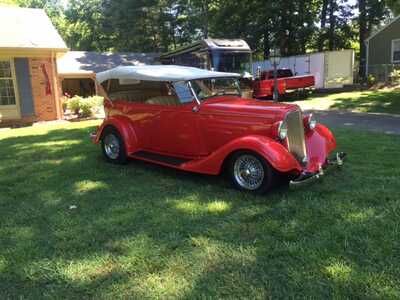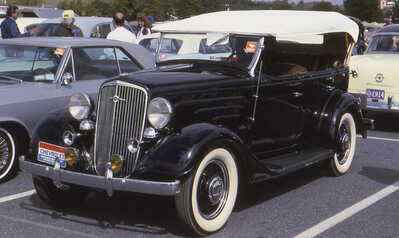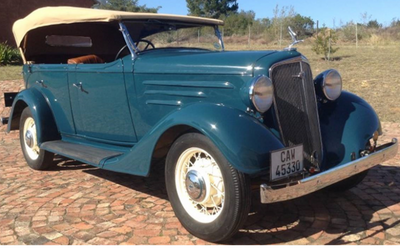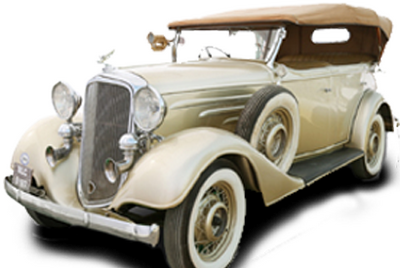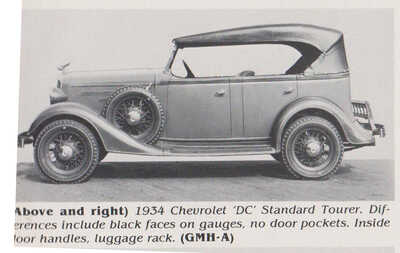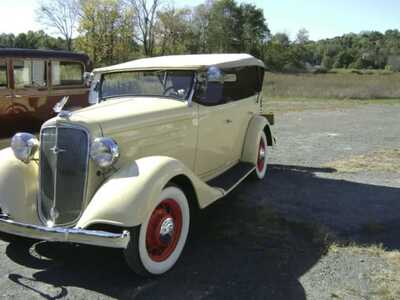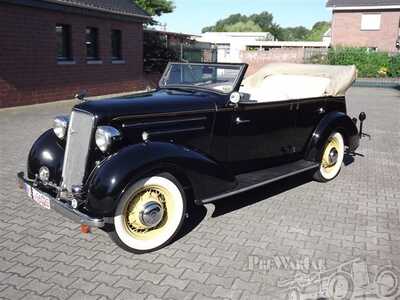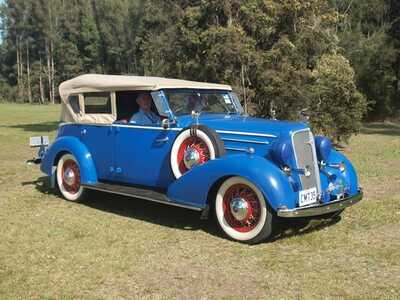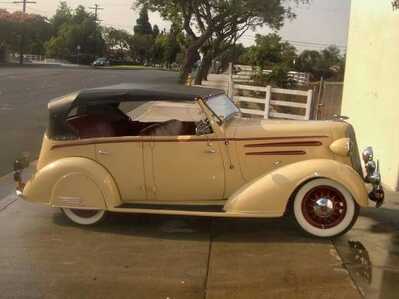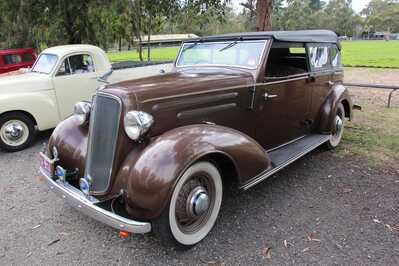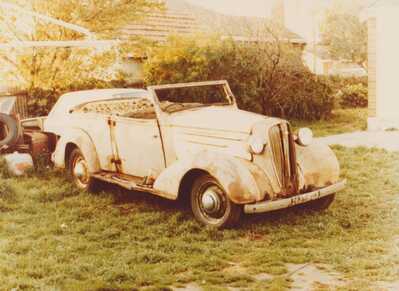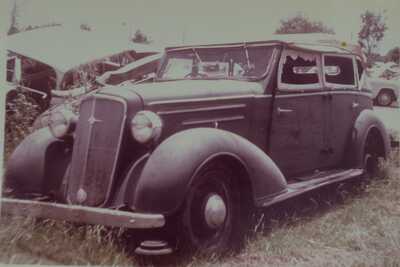Hello, I am a new owner of a Phaeton and would like to use this site to unite all those who feel sorry for me, we are not alone. Yes, only 227 were built in 1935 and only a few survive..there is talk of about 15 of them, 6 in the USA, 2 in India, 1 in Switzerland, 1 in Belgium and now one in Germany. Please send all the information you have, including photos. Who might have been the previous owner? Can I get more information using the VIN?
@meino Meino, Welcome to Chevy Chat and congratulations on your acquisition. I know little about export models, but in the USA your car would be a Standard Series, and not a Master. The 1935 Master Series was styled more like the 1936 models. I/We can tell you more about your car if we have more photos and some numbers from your ID tag or engine.
Mike
Many Miles of Happy Motoring
3469 Posts on Old VCCA Chat
@35mike hello mike, I'm not as sure as you.
In the German papers the Chevy is called a master eagle six, but that doesn't mean anything despite the German bureaucracy...
you could also call it a master tourer, although I prefer the term Phaeton.
I think the difference between the Master and the Standard is that it has two wipers, inside door pockets and the different length. There is talk of a wheelbase of 107" or 112", which seems very long to me. Mine has a total length of 112" or 4.42m
VIN: 2EC0616xxx
@meino Meino, The wheelbase of a 1935 Standard series is 107 inches. I can tell by your photos that the fenders are Standard Series. In the U.S.A. a Standard would have been delivered with painted headlamps and the shape of the headlamp is different from yours. Your lamps could be the same as was used on 1934 and 1935 Master Series. The dash and instrumentation are consistent with 1935 Standard.
The master series was completely different inside and outside. I don't know how the car was marketed in other parts of the world but if you need to source parts from here, it would be in your best interest to call it a 1935 Standard. It is a beautiful car and it is great to hear that it is in the hands of an enthusiastic new owner. I notice that your gas cap is actually a radiator cap. Your radiator cap is the 1934 accessory cap. I can't tell what I am seeing in your photo showing the casting number. I don't believe there were any 7 digit casting numbers in 1935. Some more complete views of the engine would be helpful.
I have a 1935 Standard Coupe that I have owned for 53 years. I also have a 2 door sedan (Coach) that I bought about one year ago.
Your ID number decodes as follows:
2 = assembled in Tarrytown New York
EC = 1935 Standard Series
06 = Assembled in June 1935
Mike
Many Miles of Happy Motoring
3469 Posts on Old VCCA Chat
@meino Meino, Wheelbase is center of front axle to center of rear axle, not overall length. Once again, the car could have been marketed as a Master Eagle in Europe. In the U.S.A. Eagle was a model name for a 1933 Chevy and was re-named Master after some minor changes, later in the model year. No other Chevy was ever called an Eagle over here. One more defining feature that separates The Master and Standard Series cars from 1933 through 1936 is that all Masters had 6 bolt wheels and Standards had 5 bolt wheels. I hope all this is helpful.
Mike
Many Miles of Happy Motoring
3469 Posts on Old VCCA Chat
@meino If your car has 6 bolt wheels, I can only conclude that it is some mixture of parts that was never available in the U.S.A. The ID number says it is a 1935 Standard and the fenders and dash are consistent with that model. Your bumpers are not like those on a domestic 1935 Standard EC. Your running boards are also different and might have been made from scratch during the restoration of the car. I have studied the photo of the casting number. I do not believe there is a 7 digit casting number on any part of any 1935 Chevrolet. If the photo depicts a view of the engine, I am 99% sure that your engine is not 1935 Chevy. I would like to see an overall photo of the engine.
None of this affects the enjoyment potential of your purchase. For purposes of buying replacement parts, you would want to know as much detailed information as possible. Once again, congratulations.
Mike
Many Miles of Happy Motoring
3469 Posts on Old VCCA Chat
One only needs to look at the old car situation in Cuba where virtually none of the old cars are as they came from the factory because factory parts were not available there when repairs were needed so they used whatever was at hand.
The casting number photo appears to be to be the drivers side front of the head viewed from above. It sure doesn't look like a 207 head to me but I'm certainly no expert. As Mike noted, pictures of the whole engine can help us determine whether it is or is not a Chevy engine. Mike was also correct saying that knowing what you have will make parts buying much less costly and stressful. Again, to parrot Mike, even if it's not the original engine, you have a beautiful car and will enjoy it for years to come. Congratulations!
7046 old site posts
Save a life, adopt a senior shelter pet
There are many good people. If you can't find one, be one.
1938 Master Business Coupe
1953 210 Sedan
I agree that it looks like the picture shows the drivers side front corner on the cylinder head.
If so... the edge of the rocker arm cover and the bolt holding the cover down don't look like any Chevrolet 6 I'm familiar with.
Ole S Olson
Saskatoon, Sask, Canada
1946 DR 3/4 ton stake
1139 old site posts
@ole-olson EXACTAMUNDO!!
Many Miles of Happy Motoring
3469 Posts on Old VCCA Chat
You are absolutely right. It is a Standard. I now define it as a “Chevrolet Standard Phaeton” (or is it Standard Six Phaeton? or Tourer? or New Standard Six Phaeton...).
But the best thing is: as if I had suspected it, the spare wheels have 6 bolts and the ones on the car have 5. Absolutely pointless.
Now to the engine, which doesn't seem to be original either: an Opel engine with lots of numbers. Who can solve the puzzle?
